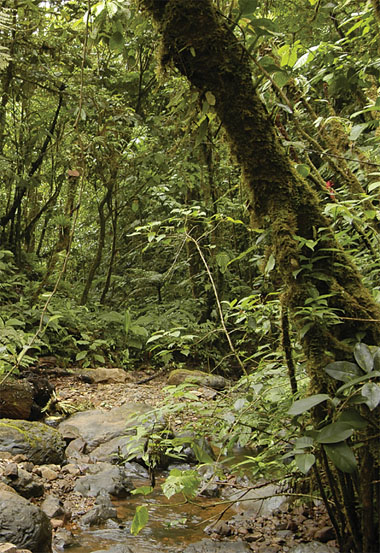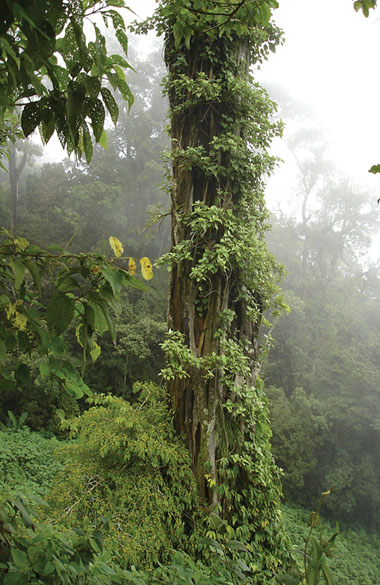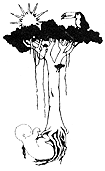The Corridor:
water supply and home to the jaguar
The Corridor stretches from the coastline close to the Carara National Park up to the small Potenciana mountain range and peaks with the 1800 meter Turrubares mountain. The area demonstrates an amazing biodiversity.  In a short stretch of less than 20 kilometers, it contains the country's major forest types: mangrove and deciduous forests, dry forests and rainforest, and, finally, cloud forests. Although it has not been extensively studied, the cloud forests could very well be home to some unique species, as they are not connected to other cloud forest systems. In a short stretch of less than 20 kilometers, it contains the country's major forest types: mangrove and deciduous forests, dry forests and rainforest, and, finally, cloud forests. Although it has not been extensively studied, the cloud forests could very well be home to some unique species, as they are not connected to other cloud forest systems.
But there is another reason for the Corridor's extraordinary biodiversity. Species from the Northern and Southern hemispheres coexist here as both find their ecological niches in this very special place. Bee species originating in Mexico share the forest with bees from Columbia. Similar observations hold true for epiphytes and tree species.
As elsewhere, the ecosystems in the Corridor made up by the forests and their inhabitants (animals) are complex. Some animals depend on several forest types and need to roam. One example is the Scarlet Macaw, which uses mangrove for breeding and fruit trees in the rainforest for feeding. Take away one or disrupt the Macaw's ability to roam from one to the other and the Macaw disappears.
 The challenge of the Carara Ecological Corridor is to identify the most endangered interconnections and to protect or restore them wherever possible, providing forest inhabitants with adequate means for survival. Planting trees is part of this effort and it allows you to actively contribute.
The challenge of the Carara Ecological Corridor is to identify the most endangered interconnections and to protect or restore them wherever possible, providing forest inhabitants with adequate means for survival. Planting trees is part of this effort and it allows you to actively contribute.
|

